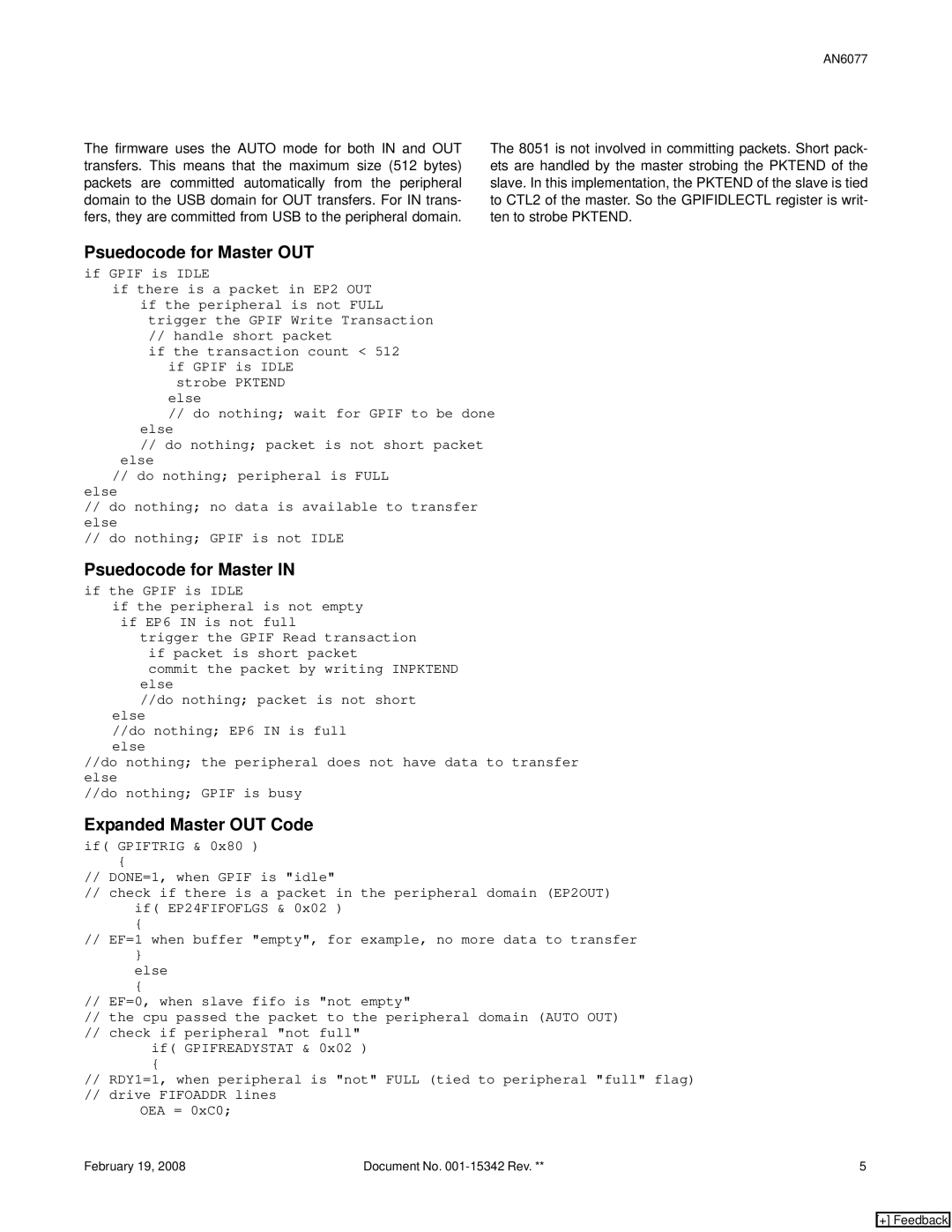AN6077
The firmware uses the AUTO mode for both IN and OUT transfers. This means that the maximum size (512 bytes) packets are committed automatically from the peripheral domain to the USB domain for OUT transfers. For IN trans- fers, they are committed from USB to the peripheral domain.
The 8051 is not involved in committing packets. Short pack- ets are handled by the master strobing the PKTEND of the slave. In this implementation, the PKTEND of the slave is tied to CTL2 of the master. So the GPIFIDLECTL register is writ- ten to strobe PKTEND.
Psuedocode for Master OUT
if GPIF is IDLE
if there is a packet in EP2 OUT if the peripheral is not FULL
trigger the GPIF Write Transaction // handle short packet
if the transaction count < 512 if GPIF is IDLE
strobe PKTEND else
//do nothing; wait for GPIF to be done
else
//do nothing; packet is not short packet
else
//do nothing; peripheral is FULL
else
//do nothing; no data is available to transfer else
//do nothing; GPIF is not IDLE
Psuedocode for Master IN
if the GPIF is IDLE
if the peripheral is not empty if EP6 IN is not full
trigger the GPIF Read transaction if packet is short packet
commit the packet by writing INPKTEND else
//do nothing; packet is not short else
//do nothing; EP6 IN is full else
//do nothing; the peripheral does not have data to transfer else
//do nothing; GPIF is busy
Expanded Master OUT Code
if( GPIFTRIG & 0x80 )
{
//DONE=1, when GPIF is "idle"
//check if there is a packet in the peripheral domain (EP2OUT) if( EP24FIFOFLGS & 0x02 )
{
//EF=1 when buffer "empty", for example, no more data to transfer
}
else
{
//EF=0, when slave fifo is "not empty"
//the cpu passed the packet to the peripheral domain (AUTO OUT)
//check if peripheral "not full"
if( GPIFREADYSTAT & 0x02 )
{
//RDY1=1, when peripheral is "not" FULL (tied to peripheral "full" flag)
//drive FIFOADDR lines
OEA = 0xC0;
February 19, 2008 | Document No. | 5 |
[+] Feedback
